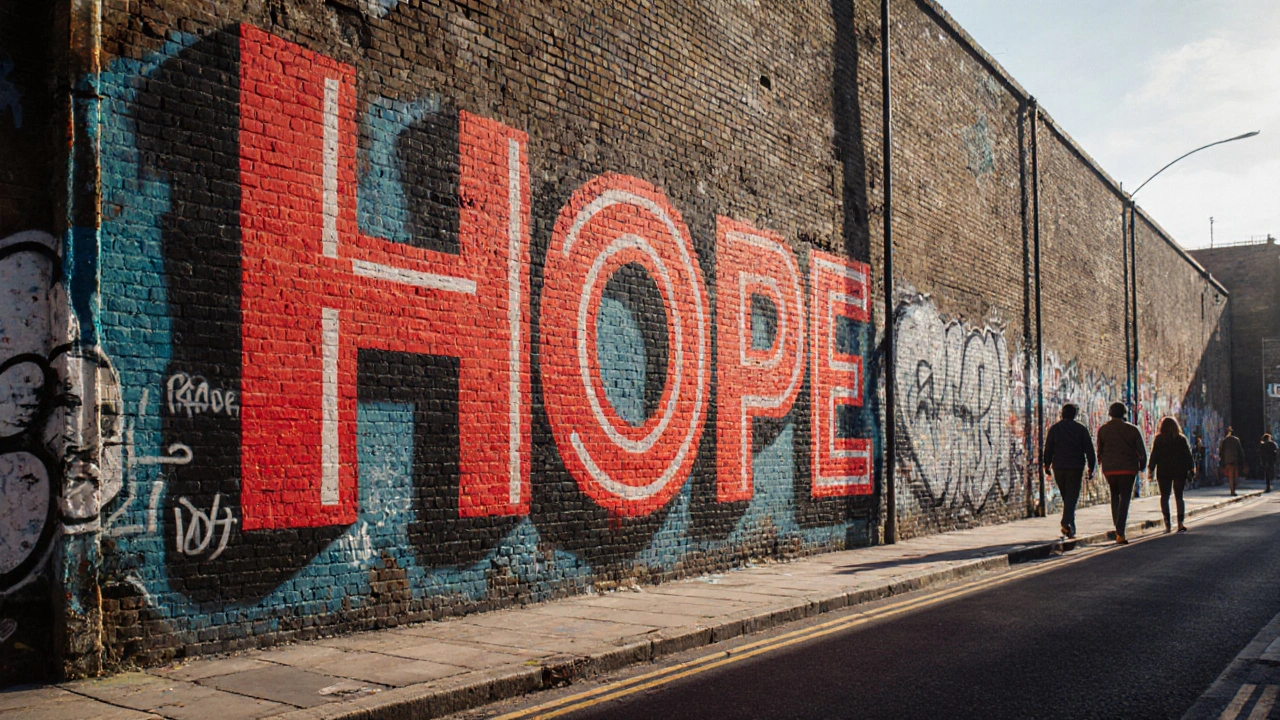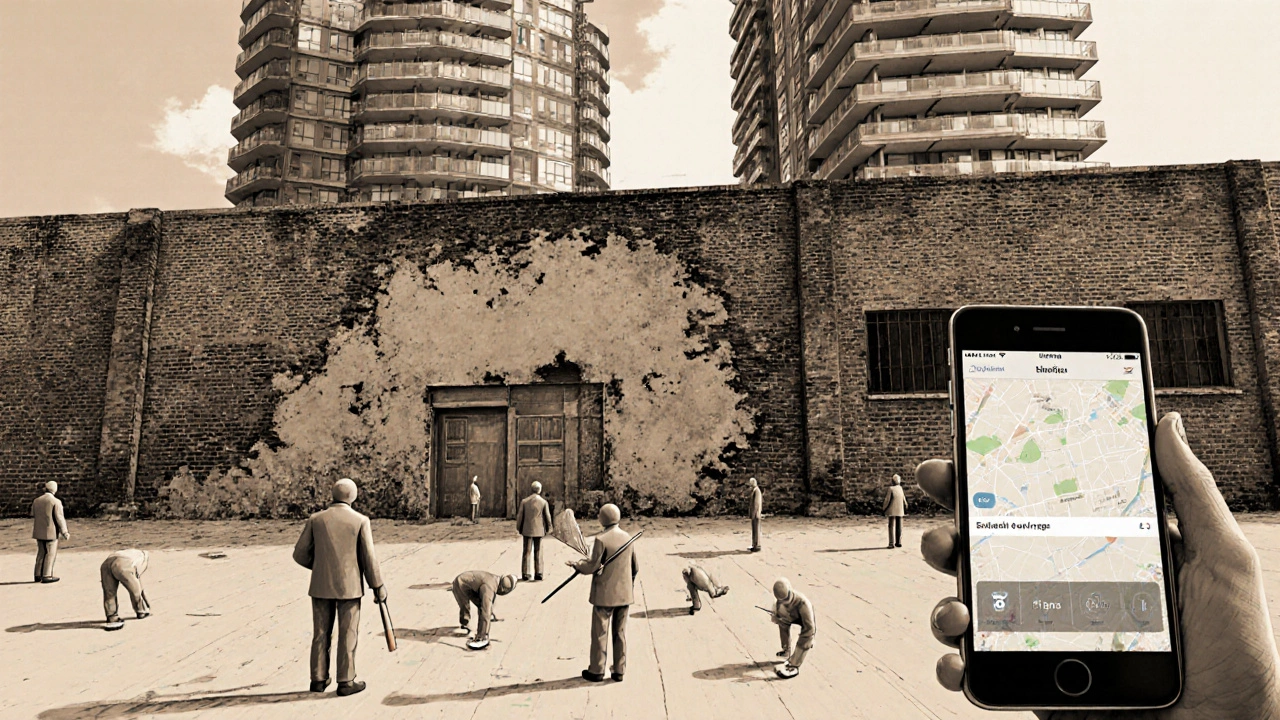
Walk down any side street in Hackney, and you’ll see walls that don’t just hold paint-they tell stories. This isn’t just decoration. It’s history, protest, identity, and joy all sprayed, stenciled, and painted onto brick and concrete. Hackney’s street art scene isn’t something you stumble on by accident. It’s the heartbeat of East London, alive since the 1980s and growing louder every year.
Where It All Started
Before it became a tourist draw, Hackney’s walls were blank canvases for local kids and frustrated artists who couldn’t get into galleries. The 1980s and 90s saw a wave of political graffiti-anti-Thatcher slogans, anti-racism murals, and bold declarations of identity. Bands like The Clash and artists like Banksy had roots in this raw, unfiltered scene. The area’s industrial decay gave artists space, and the tight-knit community gave them purpose.
By the early 2000s, street art in Hackney shifted from rebellion to recognition. Walls once covered in tags became destinations. The opening of the Hackney Wick arts district, with its abandoned warehouses and cheap rents, turned the area into a magnet for artists from across the UK and Europe. What started as illegal acts became celebrated works-some even commissioned by local councils.
Must-See Murals and Artists
You can’t talk about Hackney’s street art without naming a few names. Ben Eine turned his bold, colorful typography into global fame. His lettering-like the word “HOPE” in giant neon-red letters on a wall near Hackney Central-is now iconic. You’ll find his work on Columbia Road and around Hoxton Square.
Then there’s Stik, known for his simple, stick-figure figures that look childlike but carry deep emotion. His piece “Mother and Child” on a wall near the Hackney Hospital is one of the most photographed in London. People leave flowers at its base. It’s not just art-it’s a quiet monument to care.
On Mare Street, you’ll find a massive mural by Isaac Cordal, a Spanish artist whose tiny, gray figures are placed in unexpected corners of larger scenes. They look like office workers lost in the city, tiny against towering buildings. It’s a commentary on alienation in modern life, and it hits harder because it’s so subtle.
And then there’s the ever-changing nature of the scene. A mural painted in March might be painted over by July. That’s part of the magic. The art isn’t meant to last forever. It’s meant to reflect what’s happening now.
The Cultural Impact
Hackney’s street art doesn’t just look good-it changes how people live here. Local cafes use murals as backdrops for Instagram posts. Schools bring students to sketch the walls. Tourists come with cameras, not just for the art, but to feel the pulse of a neighborhood that refuses to be polished into blandness.
Local businesses have embraced it too. The Brick Lane Market hosts street art walks on weekends. Independent bookshops like Barbican Books sell zines made from photos of local murals. Even the council now funds legal walls where artists can work without fear of prosecution. It’s a rare case of a city government getting out of the way and letting creativity lead.
It’s also become a tool for social change. In 2023, a group of young artists painted a 60-meter-long mural on the side of a former social housing block, honoring residents displaced by gentrification. Each face was painted by someone who lived there. The mural, titled “We Were Here,” became a rallying point. It’s still there, untouched, even as luxury flats rise around it.

How to Explore It
You don’t need a guide, but you do need the right shoes and a sense of curiosity. Start at Columbia Road on a Sunday morning when the flower market is open. The alley behind the market is a hidden gallery of shifting murals.
Walk down Hoxton Street toward the railway arches. You’ll find stencils by international artists-some signed, many not. Look up. Some of the best pieces are on rooftops or high walls, painted from scaffolding.
Don’t miss the Hackney Wick area near the Olympic Park. The old factories here are covered in layered art-some new, some faded, some painted over. It’s like an open-air archive. The Wick Public House has a mural on its side that changes every season. Visit in winter, then again in summer, and you’ll see a completely different wall.
Use the free Hackney Street Art Map available at the Hackney Council website. It’s updated monthly by local volunteers who track new pieces and removals. It’s not perfect, but it’s the most honest guide you’ll find.
Why It Matters
Hackney’s street art isn’t just about beauty. It’s about who gets to speak in public space. For decades, the city told people: “Don’t touch the walls.” But here, the walls talk back. They say who’s been forgotten. Who’s still fighting. Who still believes in color when everything else is gray.
This art isn’t made for Instagram likes. It’s made for the person who walks past it every day and sees themselves in it. A mother with a stroller. A teenager on a bike. An elderly man with a cane. They don’t stop to take photos. They just nod, smile, or keep walking-because they know what it means.
Hackney’s street art survives because it’s not owned. It’s not sold. It doesn’t need approval. It just exists. And in a city that’s changing faster than ever, that’s the most radical thing of all.

What’s Next for Hackney’s Art Scene
The pressure is growing. Rent in Hackney has doubled since 2015. Artists are being pushed out. Some murals are being painted over to make way for luxury condos. But the community isn’t backing down.
New collectives like Wick & Wild are turning empty storefronts into temporary galleries. They host monthly “Paint & Protest” nights where anyone can contribute to a new mural on a legal wall. No permits. No fees. Just paint, spray cans, and a shared belief that public space belongs to everyone.
There’s also a push to digitize the art. A local tech collective built a free app called StreetEcho that uses AR to show the history of each mural-when it was painted, who made it, and why. Scan a wall with your phone, and you’ll hear the artist’s voice explaining their work. It’s not about replacing the real thing. It’s about preserving it before it’s gone.
The future of Hackney’s street art won’t be in museums. It’ll be on the walls. On the corners. In the alleys. Where it always was.
Is street art in Hackney legal?
Some of it is, some isn’t. Many murals are commissioned by property owners or the council, especially in areas like Hackney Wick and Columbia Road. But a lot of work is still done without permission. The city has tolerated it for decades because it’s part of the neighborhood’s identity. There are now designated legal walls where artists can paint freely, and the council even runs a mural grant program for community-led projects.
Can I take photos of street art in Hackney?
Yes, absolutely. Taking photos for personal use is encouraged. Many artists want their work to be seen. But don’t use photos for commercial purposes-like selling prints or using them in ads-without contacting the artist. Some murals are copyrighted, even if they’re on public walls. If you’re unsure, check the StreetEcho app or ask at a local café that supports the scene.
When is the best time to visit Hackney for street art?
Spring and autumn are ideal. The weather is mild, and the light is perfect for photos. Summer can be crowded, and winter brings rain that sometimes washes away fresh paint. Many artists work in the colder months, so you might catch new pieces being added. Weekday mornings are quieter, and you’ll see the art without the crowds. Sunday mornings at Columbia Road Market are lively but worth it for the energy.
Are there guided tours for Hackney street art?
Yes, but skip the big corporate ones. Look for small, locally run tours like those by East London Street Art Collective or Wick & Wild. These are led by artists or longtime residents who know the stories behind the walls. They cost around £15-£25, last 2-3 hours, and often include a coffee stop at a local spot that supports the scene. Avoid tours that promise “Banksy sightings”-most of those are mislabeled or outdated.
How do I support Hackney’s street art scene?
Buy art from local artists at markets like Brick Lane or the Hackney Art Fair. Visit independent cafes and shops that display murals. Donate to the Hackney Mural Fund, which helps fund community projects. Don’t spray over work you don’t like-report vandalism to the council instead. And if you’re an artist yourself, join a legal wall session. The scene thrives when people show up-not just to look, but to participate.
Final Thoughts
Hackney’s street art isn’t a spectacle. It’s a conversation. It’s messy, loud, and sometimes ugly. But it’s real. It doesn’t need a museum. It doesn’t need a price tag. It just needs someone to see it.
Go there. Walk slow. Look up. Listen. The walls are talking.